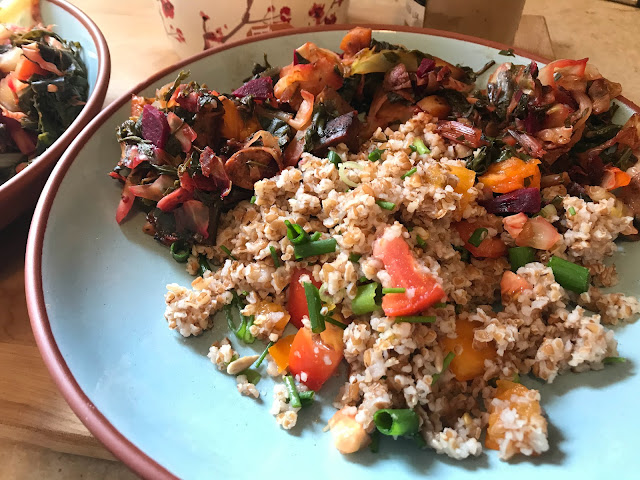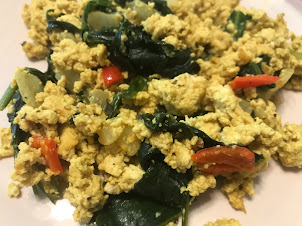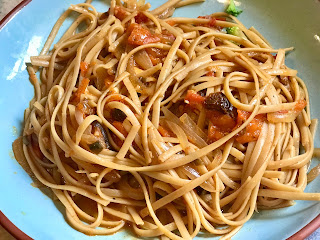My Macrobiotic Meals For Weight Loss
Macrobiotic Meals for Weight Loss
Here are examples of my macrobiotic meals for weight loss.
For starters, if you haven't already read my previous posts, you may want to start with My Amazing Macrobiotic Weight Loss, where I share what I did differently that led to my success, followed by My Macrobiotic Weight Loss and Health Journey, where I share a little of my health history, and photos of my recent macrobiotic weight loss.
More weight loss tips, and my simple Miso Soup Recipe to come.
To get an idea of how eating macrobiotically compares to how most people eat in Western cultures, I encourage you to check out my article, A Vegan Lunch Out - How Does It Compare To A Macrobiotic Meal? and my article, Crafting A Healthy Diet, Universal Principles. Be sure to check out more resources and recipes, below.
Click here for all Macrobiotics related topics.
- I make sure to eat some greens and vegetables at each of our two main meals. I usually have a snack, typically fruit and maybe a small amount of nuts and seeds, or if it's later, a bowl of puffed grain cereal with seasonal berries or hemp seeds. This is just what works for our current schedule.
- We also make sure to include one large carrot (each), and a cup of winter squash, or a sweet potato for betacarotene / vitamin A conversion, along with one cup of cooked dark leafy greens, daily.
- Each meal features a whole grain, or whole grain product, such as brown rice, bulgur, oats and millet, noodles, Don's Steamed Sourdough Buns, or a store bought whole/sprouted grain bread or tortillas.
- Most days, our breakfast consist of grain porridge with either Miso Soup with greens and /or vegetables. Having plenty of greens and vegetables is very important for both weight loss, and getting an adequate intake of minerals, phytonutrients, and antioxidants.
- Having soups at least once per day is very helpful for aiding digestion, and supporting healthy weight loss.
- My macrobiotic weight loss meals include plenty of fiber- and nutrient-rich lentils, beans and/or chickpeas most days (just not as much as we used to consume.)
- I generally cook oil-free, but not entirely. I do add some oils to dips, dressings, and/or stir fries, however, the amount I use is very minimal. That said, it is easy to stir fry and cook meals oil-free. Seeds, and whole plant fats can be used to create dressings and sauces instead. For optimal weight loss, I suggest abstaining from oils for at least one month, to start.
 |
| Breakfast Porridge with Greens, Miso Veg Soup & Local Strawberries |
 |
| Bulgur / Cracked Wheat is super nutritious, and very quick to prepare; the chewy texture makes for great salads like Tabouleh, or added to any other salad ~ I tossed this with fresh garden tomatoes, chives, scallion, celery, lemon, and a splash of balsamic vinegar and reduced sodium tamari (see condiments I use, here.) |
 |
| The above Bulgur 'Salad' with a ton more colorful vegetables |
 |
| Green Split Pea Soup topped with Roasted Peppers & Dulse |
 Porridge with QB Greens & Veggies ~ a medley of dark leafy greens, cabbage, carrot, onion, and daikon radish with a sprinkle of kelp granules, and splash of umeboshi vinegar (see below)
Porridge with QB Greens & Veggies ~ a medley of dark leafy greens, cabbage, carrot, onion, and daikon radish with a sprinkle of kelp granules, and splash of umeboshi vinegar (see below) For those concerned about gas and bloating on a whole foods, plant-based diet, the body will adjust to a higher fiber intake, however, there are ways to help minimize digestive discomfort, including adding higher fiber foods like beans in slowly, with just a little at a time. You can watch my video about how we adjusted our meals to improve our digestion following suggestions in Ayurvedic medicine, below, or read my article on Tips to Improve Digestion, or How to Minimize Gas and Bloating ~ Recent Meals with Our Vata Reducing Dietary Revisions. According to Chinese food therapy and Macrobiotics, black soy beans, aduki beans, and small black turtle beans are good for the kidneys. Black soy beans have a slightly higher fat content, making them super creamy and tender when cooked properly. We also enjoy aduki (azuki/adzuki) beans, which look like small red beans with a tiny white stripe, chickpeas, lentils, and green or yellow split peas. Black sesame seeds also support the kidneys (in general, darker colored blue or black foods), and are taken daily as a tea to help maintain one's natural hair color, used by the Chinese emperors to keep their hair black. In the picture below, black sesame seeds are sprinkled on top of black soy beans as a garnish. Tender, Seasoned Black Soy Beans, Brown Rice with Millet, and Sautéed Greens, Mushrooms & Onions More Macrobiotic Meals for Weight Loss About once per week, we have some type of noodle dish, either a Soba Noodle Salad or Soup, or 100% whole wheat or whole grain pastas with simple sauces as shown in the top two photos, including tomato sauce made from home grown tomatoes and vegetables, and occasionally a lower-sodium, store-bought spaghetti sauce. Here's a great Healthy Homemade Slightly Spicy Marinara Sauce Recipe. |

 |
Millet Squares, QB Greens, and a Sweet Potato. Millet and/or polenta and millet can be poured into a baking dish once cooked. It can then be cut into squares, or bars, and taken to-go, or reheated by either steaming, baking, or pan-frying in a little toasted sesame oil if craving something more rich. |
 |
| We eat ample portions of whole grains, vegetables, and other supplemental foods. That said, for weight loss, learn to eat enough to feel satisfied without over eating. |
 |
| Brown Rice w/ QB Green Beans, Onions & Carrots |
 |
| Barley Oat Porridge with Goji Berries |
 |
| Miso Soup with Wakame, Ginger, Carrots, Celery Scallion & Dried Shiitake Mushroom |














Comments
Post a Comment
Let me know what you think! I'd love to hear from you!